Medium-Depth Chemical Peels
chemical peels fight aging, acne, hyperpigmentation, and more
Understanding Medium-Depth Chemical Peels: A Balanced Approach to Skin Rejuvenation
A medium-depth peel is a type of chemical exfoliation treatment that penetrates beyond the outermost layer of skin (epidermis) into the upper dermis, where more significant skin concerns originate. It’s stronger than a superficial peel but gentler than a deep peel (Which should only be performed by a highly qualified cosmetic doctor or plastic surgeon), making it ideal for achieving visible improvements without excessive downtime.
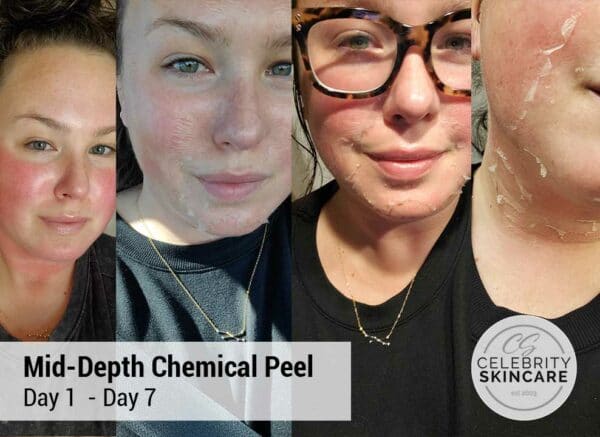
What are Medium-Depth Chemical Peels used for?
Conditions Addressed by Medium-Depth Chemical Peels:
- Acne and acne scarring
- Fine lines and wrinkles
- Melasma and hyperpigmentation
- Sun damage
- Rough texture or uneven tone
- Aging skin (especially over age 40)
- Stretch marks and surgical scars
Even a single chemical peel can leave your skin looking brighter and more vibrant!
mid-depth / medium-depth chemical peels
The Celebrity Skin Medium Depth Peel and the VI Peel are both mid-depth level peels designed for all skin types and tones. Formulated to boost collagen production to improve the appearance of fine lines, wrinkles, and all types of scarring (acne scars, surgical scars, stretch marks), to create an even tone and smooth texture, to reduce and in some cases eliminate hyperpigmentation (brown spots, melasma, sun damage), and to reduce acneic skin conditions.
Performed by a Highly Trained Professional
Jennifer Swink, MAPC, is an expert in chemical peels with extensive training and certifications, including in medium-depth and medical peels, as well as specialized training for Skin of Color.
Her qualifications include training from top brands like Obagi, SkinCeuticals, Skin Medica, Melanage, PCA, Jan Marini, Rhonda Allison, Perfect Peel, and the VI Peel. Jennifer’s Certified in Medical Aesthetics and Ethnic Skin at The Skin & Makeup Institute of Arizona, and eventually became an instructor for this program.
Her comprehensive training covers all types of chemical peels—from superficial to deep—and various acids like TCA, Jessner, Salicylic, and Glycolic. She has expertise in treating a wide range of skin conditions, including acne, scarring, melasma, hyperpigmentation, sun damage, fine lines, wrinkles, and sensitive skin.
Frequently asked questions about chemical peels
Both are medium-depth, medical-grade peels, but there are key differences:
Celebrity Skin Medium-Depth Peel
- Customizable, professional-strength formula
- Depending on the formula, includes powerful ingredients: TCA, salicylic acid, kojic acid, retinoic acid, Vitamin C, and glutathione
- No built-in numbing agent — It will feel stinging sensation for about 2 minutes
VI Peel
- Contains Phenol, a numbing agent that minimizes stinging during application
- Phenol also acts as a key active ingredient, contributing to the peel’s rejuvenating effects
- Pre-packaged formulation, widely used and popular
- Treatment Day: The peel is applied in layers and will cause a warm and tingling sensation. Skin is slightly pink or red depending on skin type and sensitivity.
- Days 1–3: Skin feels tight, dry, and may appear shiny (like parchment paper).
- Days 3–7: Peeling begins—skin flakes off in larger pieces than with lighter peels. Wrinkles and pigmentation may temporarily appear more pronounced.
- Days 7–10: Peeling subsides, revealing smoother, brighter, and more even skin.
Medium-depth peels are safe for both men, women, and most skin types and tones, including darker complexions, as long as the skin is properly prepped beforehand and post-care instructions are followed. Peels can also be used on non-facial areas such as the chest, hands, arms, and back.
Light or Superficial chemical peels are the mildest type, having minimum side effects (slight dryness, mild/light flaking to no flaking) and are quick to recover from. Light peels exfoliate the topmost layer of the skin helping to reduce acne, unclog pores, reduce uneven pigmentation and rough skin revealing smoother, fresher and more radiant skin tone. Although not ideal, you could put makeup on and go out to dinner after this peel and no one would know you had done anything.
Light/superficial peels are ideal for:
- Younger individuals (puberty up) to address minor skin problems
- Individuals who do not want to experience downtime (peeling)
- Individuals with sensitive skin
- Individuals who receive ongoing monthly light peels, as monthly medium depth peels indefinitely are not advised
Progressive Peels are light peel treatments are safe enough to be done every 4 to 6 weeks on a regular basis. Progressive peels will have cumulative effects without having to go through noticeable downtime. For darker skin tones, progressive peels reduce the potential risks that mid-depth and deep peels carry for this skin type.
Medium depth peels (Mid-Depth) are deeper targeting the intra-epidermal layer. This type of peel is considered minimal to moderate downtime.
Remember downtime is subjective. What you think looks bad may not be what I think looks bad. On average, it will take 5 to 8 days from peel start to finish. Day 1-3 your skin will be dry and tight, day 3-4 your skin usually starts to peel and peeling can last 3 to 5 days.
Mid-depth peels tend to be more noticeable than superficial ones. The flaking is considerably more and the flakes are larger. Sometimes the skin looks shiny like parchment paper and wrinkles and brown spots appear more pronounced until the peel has completed. This peel is safe for most skin types including darker skin tones so long as skin has been appropriately prepped before hand and after care instructions are strictly followed. (The VI Peel would fall under Medium Depth Peel Category too).
All peels do the same thing to different degrees; boost collagen production to improve fine lines and wrinkles, help with texture and tone, reduce hyperpigmentation (brown spots), reduces the appearance of all types of scars and helps to reduce acne.
Medium depth peels (Mid-Depth) are deeper targeting the intra-epidermal layer. This type of peel is considered minimal to moderate downtime.
The VI Peel is considered a medium depth peel, and is one of the most popular types of medical-grade chemical peels. The VI Peel is suitable for all skin types, and improves the tone, texture, and clarity of your skin.
Yes, almost any part of the body can be peeled and rejuvenated. With a Body Chemical Peel, you can get rid of unsightly sun damage and improve the health of your skin everywhere! Our popular Works Facial includes hands and chest, so it’s a great option to tackle everything at once.
We can peel your arms, legs, back, and more with our body chemical peel treatment. Some of the more popular body parts, aka “the forgotten zones,” are the skin on the neck, chest and hands.
Yes, chemical peels are a core component of our acne treatment facials that address clearing active acne breakouts as well as old acne scars.
Celebrity Skin acne facials are custom treatments designed for you, and work alone or in conjunction with any prescription acne treatment products you may be currently using. For acne sufferers, we typically employ medium depth chemical peels to achieve our goals of clearing active acne and reducing the appearance of hyperpigmentation and scarring from prior breakouts. Chemical peels can be very effective at treating acne and minimizing old acne scars on the face or any part of the body.
Chemical peels are not recommended for these clients:
- Accutane – 1 year off (isotretinoin, 13-cis-retinoic acid)
- Recent cosmetic surgery, laser resurfacing, deep chemical peels or dermabrasion (not microdermabrasion) – must have doctor’s note
- Active bacterial, viral, fungal or herpetic infections (cold sores, shingles)
- Pre-existing inflammatory dermatoses (psoriasis, atopic dermatitis, pemphigus)
- Rosacea – Will need to be evaluated (moderate to severe or current flare up)
- Facial cancers (especially facial melanoma), history of radiation to the region, undergoing chemotherapy currently or within the past year. Must have doctor’s note.
- Serious medical conditions such as diabetes, severe systemic autoimmune disease, infectious disease.
- Pregnant or lactating
- Allergy to aspirin (Salicylic Peels)
- Permanent Cosmetics (such as microblading of eyebrows) – best to wait 7 to 10 days then cover with occlusive barrier
- Discontinue Retin-A, Tretinoin, Renova, Tazorac, EpiDuo, Differin, Avage, Ziana– for 3 to 7 days prior to treatment
- Currently or recently on prescription steroids
- Sunburned or compromised skin, open wounds, lesions, rash or irritated skin
- Facial Waxing – requires a 72-hour waiting period
- Obsessive pickers
It’s important to review our chemical peel instructions to help maximize your results and minimize complications.
Chemical Peels Before & After
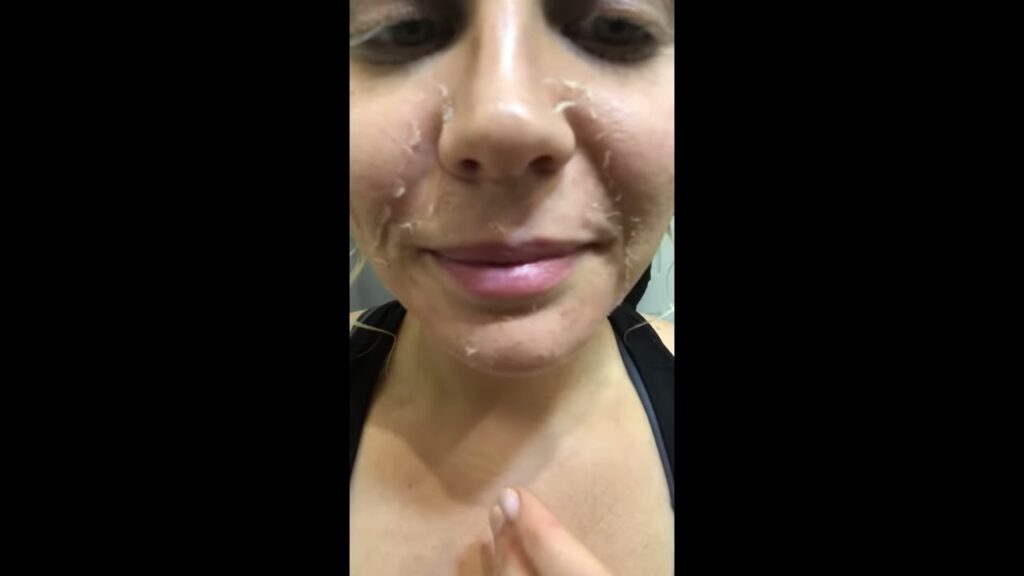
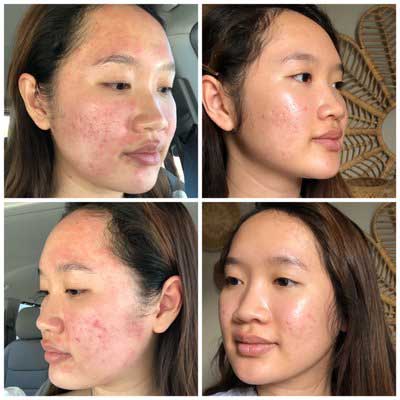
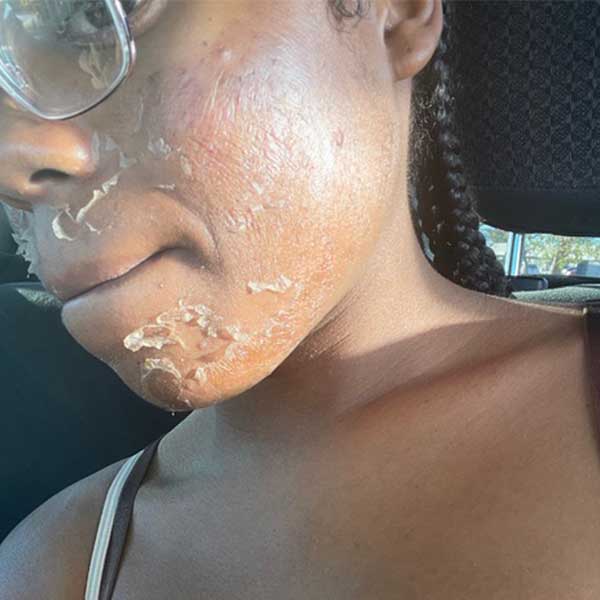
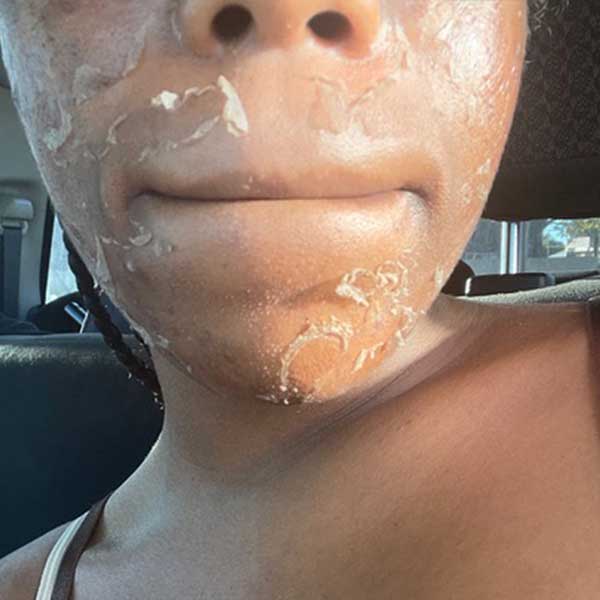
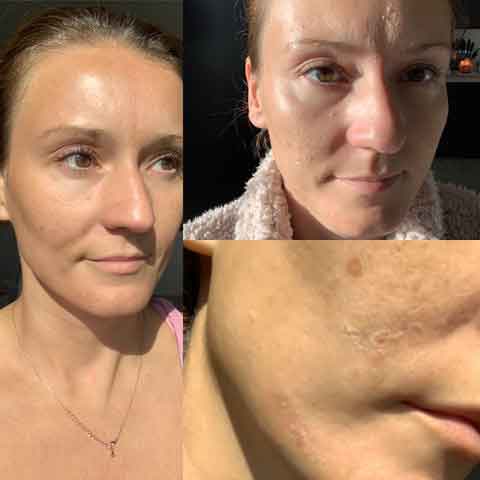




custom services for chemical peels
- New Client Consultation + Treatment
- Acne Deep Pore Cleansing Chemical Peel Facial + Light Therapy
- Acne Facial For Teens + Light Therapy
- Back Facial + Light Therapy
- Celebrity Skin Medium Depth Chemical Peel
- Microneedling Treatment
- Body Chemical Peel
- VI Peel
- Microdermabrasion Facial + Light Therapy
- Men’s Facial + Light Therapy
- Any of the 20 Minute Treatments
* All chemical peels can and will be customized for your specific needs
Everyone’s skin is different. The best thing is to do is book a New Client Consultation + Treatment to discuss and personalize your treatment with products to meet your individual needs.

